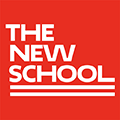BUILDING PRODUCT ECOSYSTEMS PARTNERSHIP TO ADDRESS TOXINS IN THE BUILT ENVIRONMENTThe Durst Organization, The New School, CUNY Launch New Partnership |
New York, September 17, 2014 – The Durst Organization, The New School and the City University of New York (CUNY) announced a new partnership today aimed at optimizing the health and transparency of our living and working environment. Building Product Ecosystems (BPE) includes leaders from New York's design, construction, manufacturing, government, health, and academia in an ongoing exchange of research and accessible education in order to integrate healthy solutions into the marketplace. The first BPE conference, hosted at The New School’s Tishman Auditorium, Launching a Framework for Progress, utilized the BPE platform: open discussion and problem solving between members of the building products ecosystem and the group of professionals who design, develop and manufacture constructed environments. “Today we realize that we need to ask not just how well our materials and systems optimize water and energy resource use, but what are those materials and systems made of, and what are their true health impacts?” said Douglas Durst, Chairman of The Durst Organization. “Today’s conference brings together the leaders in our field to begin answering these challenging questions.” BPE seeks to transcend the siloes in which these disciplines have traditionally worked. Further, as a partnership between academia and industry, BPE provides a framework for impartial research, academic scholarship, and proactive assessment of building product health for real-world implementation. “Creating a sustainable and healthful built environment requires a coordinated effort across fields,” said Parsons Executive Dean Joel Towers. “Since our founding, The New School and Parsons have been committed to interdisciplinary study with meaningful social impact. We are thrilled to host this event, which is crucial to the advancement of sustainable practice in New York City's building community .” In its first phase, BPE will focus on three elements of building and construction that have a significant impact in New York City: Flame Retardants and Codes, Evolving Wallboard Systems, and Glass in Concrete. These issues will be explored in courses at The New School and CUNY, by independent researchers, and at several public events held over the academic year. “We know by now that materials with toxins can have a dramatic impact on our children’s health, the lungs of our first responders and all of our lives,” said Tria Case, University Director of Sustainability, CUNY. “CUNY is committed to bringing our scientists and their laboratories to the partnership as well as providing a platform that engages a broad coalition of the NYC decision makers that are crucial to bringing about the needed changes to our built environment.” Reflective of the interdisciplinary nature of the partnership, today’s event featured experts from across the building product ecosystem. Dr. Philip J. Landrigan of the Icahn School of Medicine at Mount Sinai addressed human health issues, Dr. John Warner, President, Warner Babcock Institute for Green Chemistry, and Co-Founder and President, Beyond Benign Green Chemistry Education spoke about green chemistry, and Gavin McIntyre, Co-Founder and Chief Scientist of Ecovative Design discussed product innovation. In addition, opening remarks were delivered by Joel Towers, Executive Dean of Parsons The New School For Design; Douglas Durst, Chairman, The Durst Organization; and Tria Case, University Directory of Sustainability, City University of New York. The Durst Organization, founded in 1915 by Joseph Durst, is the owner, manager and builder of 13 million square feet of premiere Manhattan office towers. The Durst Organization is recognized as a world leader in the development of high-performance and environmentally advanced commercial and residential property. Founded in 1919, The New School was born out of principles of academic freedom, tolerance, and experimentation. Committed to social engagement, The New School today remains in the vanguard of innovation in higher education, with more than 10,000 undergraduate and graduate students challenging the status quo in design and the social sciences, liberal arts, management, the arts, and media. The New School welcomes thousands of adult learners annually for continuing education courses and calendar of lectures, screenings, readings, and concerts. Through its online learning portals, research institutes, and international partnerships, The New School maintains a global presence. Learn more at www.newschool.edu. As this nation's largest urban university, the City University of New York (CUNY) plays a transformational role in our sustainable future with an educational footprint that spans 24 academic institutions and over half a million students, faculty and staff. CUNY is dedicated to integrating sustainability into the university, our city and our state. CUNY engages the broader community through efforts that include curriculum development, policy work, research, capital projects, workforce development and economic development activities. Sustainable CUNY focuses on three key pillars: Campus Sustainability, New York Sustainable Energy Projects and CUNY SustainableWorks, a commercialization program for sustainable and clean technology. |
|
###
|
 |
MARKETING AND COMMUNICATION |
| 79 Fifth Avenue New York, NY 10003 www.newschool.edu |
PRESS RELEASE |
Media Contacts: Sam Biederman, Jordan Barowitz, Laurie S. Reilly, |
|
|
